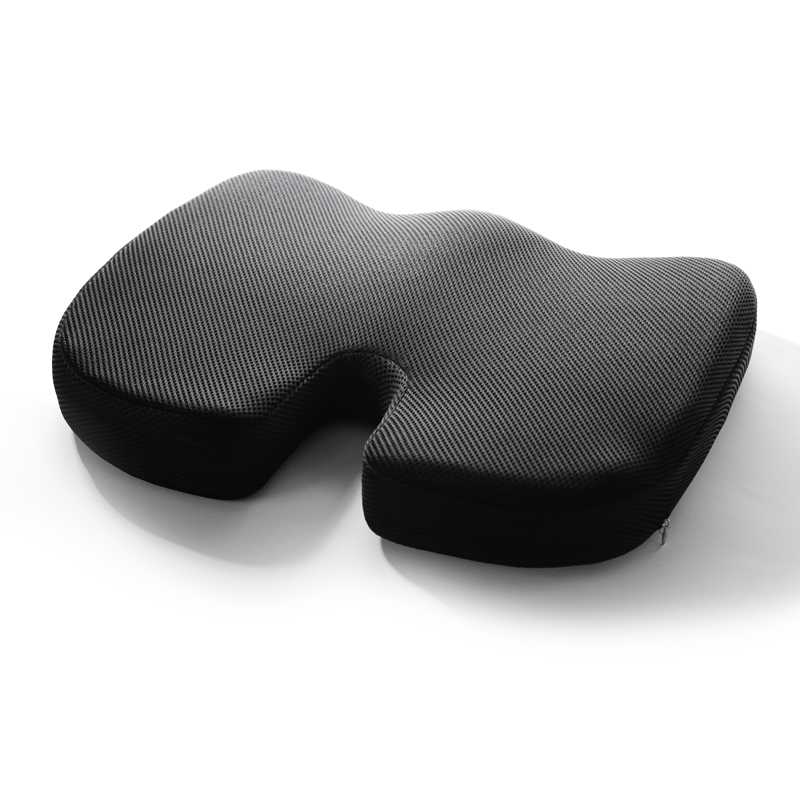The temperature regulation of a memory foam seat cushion is one of the key features of its comfort and adaptability. The special properties of memory foam itself allow it to adjust its hardness and support according to the user's body temperature and ambient temperature changes, thereby improving comfort. Here are the specific mechanisms by which a memory foam seat cushion can adapt to different user needs through temperature regulation:
A key feature of memory foam is its temperature sensitivity. When the cushion is exposed to different temperatures, the hardness of the memory foam changes. At higher temperatures, the memory foam becomes softer and more flexible, while at lower temperatures, the foam becomes harder. This feature allows the memory foam seat cushion to adjust its shape and hardness according to the user's body temperature and ambient temperature to provide optimal comfort.
In a warm environment, the memory foam becomes softer and can better fit the curves of the body, providing greater comfort and support.
In a colder environment, the memory foam becomes harder and provides more support, avoiding the loss of proper support for the body due to being too soft.
Another major advantage of memory foam is that it can sense the body's body temperature and soften the surface of the cushion by heating to improve comfort. When sitting on a memory foam cushion, the body heat gradually transfers to the foam, making it softer and more adaptable to the body's shape and weight distribution.
This adaptability is particularly helpful in reducing body pressure points and avoiding discomfort caused by long periods of sitting. For example, pressure on the buttocks and thighs is evenly distributed, reducing unnecessary pressure and relieving fatigue in the back and legs.

Memory foam cushions not only respond to the user's body temperature, but also the ambient temperature. In hot environments, the thermal sensitivity of memory foam can make it softer and less uncomfortable; while in cold environments, memory foam maintains a certain support to avoid insufficient support due to becoming too soft.
For memory foam cushions used outdoors or in cold environments, some high-end products will add cooling or heating functions to further improve adaptability. For example, some products use built-in temperature control technology, which can maintain the appropriate hardness and comfort through heating or cooling.
With the development of technology, some advanced memory foam cushion products have been equipped with intelligent temperature control technology, which can adjust the temperature and hardness of the cushion in real time. For example, with built-in temperature sensors, the cushions can automatically adjust their softness based on the user's body temperature and the external environment, allowing users to always enjoy the best comfort experience.
These intelligent temperature-controlled cushions can meet the needs of use in different seasons and different climate conditions, especially for people who need to sit for long periods of time to work or drive.
Although temperature sensitivity is an important feature of memory foam, its effectiveness is also affected by many factors:
Good breathability can help memory foam adjust temperature faster. For example, many memory foam cushions are equipped with breathable mesh fabrics or open-hole designs to help air circulation and avoid excessively high or low temperatures caused by long-term sitting, which affects the performance of the foam.
The outer covering material of the memory foam cushion (such as cotton, polyester, suede, etc.) can also affect the temperature regulation effect. The breathability and touch of different materials determine the comfort performance of the cushion in different environments.
The temperature regulation function of memory foam cushions is mainly achieved through its temperature sensitivity and body temperature adaptability. When the external temperature or the user's body temperature changes, the hardness and support performance of the foam will be adjusted accordingly to provide optimal comfort. Through these technologies, memory foam cushions can meet the comfort needs of different users in various temperature environments, providing continuous support and pressure relief. This makes it an ideal choice for users who need extra care, such as people who sit for long periods of time, drivers and the elderly.